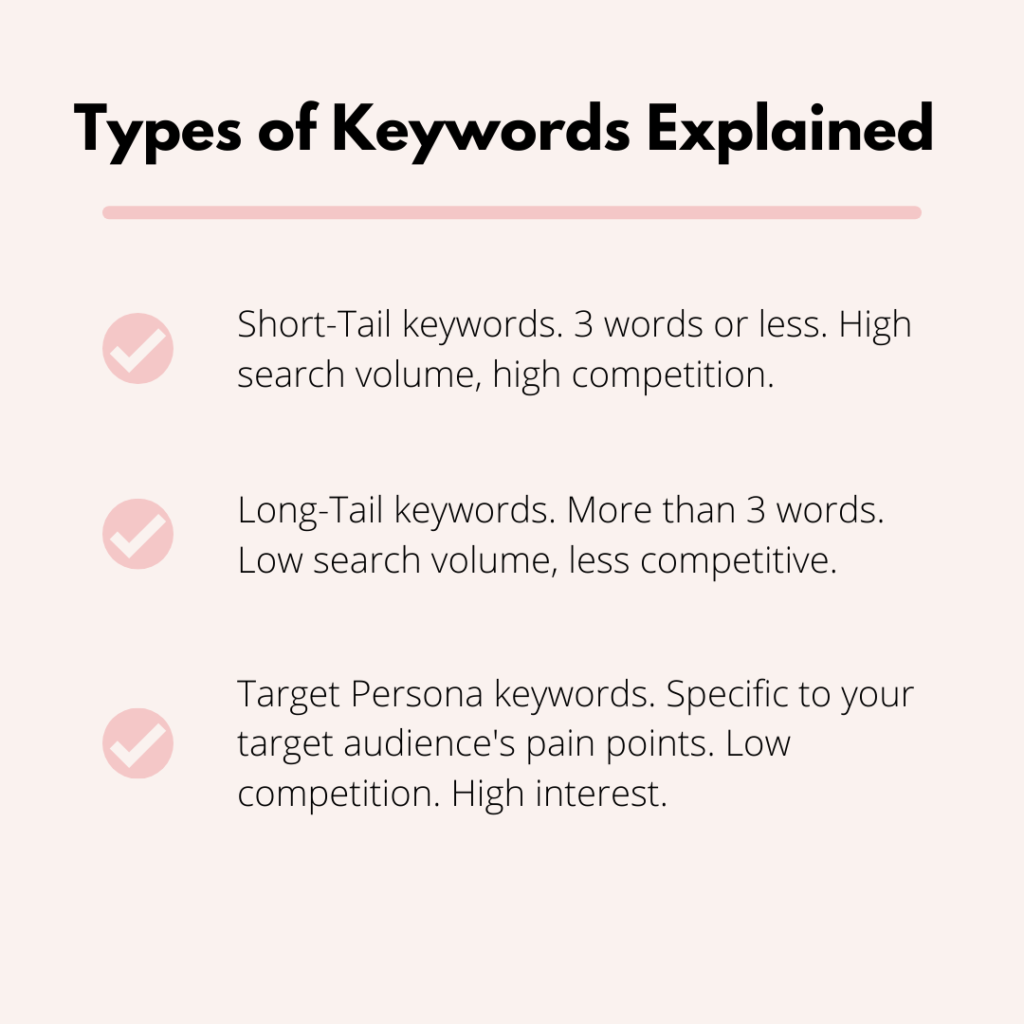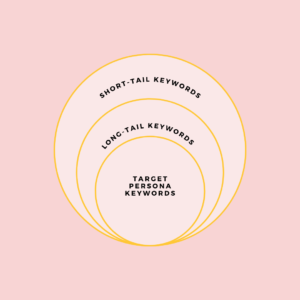A Beginner’s Guide to Keyword Research
You’re probably reading this because you’ve heard a lot about the infamous “keyword research for SEO.” You’ve probably read a few articles about it and know that it is something you SHOULD be doing, but you’re still not 100% sure where to start. Every article you’ve read probably contains really good information but the actions the writers want you to take are super confusing. Maybe they use technical industry jargon that you just don’t understand and you’re left thinking, “what just happened?”
Not to worry. You’re not alone and you’ve come to the right place. In this post, I am going to talk about three different types of SEO keywords, where to find them (aka, keyword research tools) and how to use them in your content.
Short-Tail Keywords for SEO
Short-tail keywords are pretty much just what they sound like. These are searches that have three words or less. Think general and broad terms. Not surprisingly, these keywords tend to be high in search volume but are also very competitive, which means they are harder to rank for. Examples of short-tail keywords might be “dog collars,” best lasagna recipes, or “weight loss programs.”
Short-tail keywords are the types of searches that you would go after farther down the road in your content marketing strategy. So for now, think of short-tail keywords as the outer most ring of all the terms you might possibly target on your website. There might be some lower search volume terms you find along your way, but generally, these terms are high search volume/high-competition.
Long-Tail Keywords
Long-tail keywords are likely the best friend you don’t know you already have. These keywords usually have more than three words, tend to be lower in search traffic and are usually much less competitive. That means they will be easier for your website to rank for depending on their competitiveness.
An example of a long-tail keyword might be: “best podcasts for overwhelmed moms.” The user intent is more clearly defined and the searches tend to be more specific. These keywords are the next inner ring of your target keywords.
Luna Tip: Keep in mind that lower search volume doesn’t necessarily equal easier to rank for, but when looking at longer tail terms, keyword research tools often provide a “keyword difficulty” or competitiveness metric. Use that in conjunction with search volume and competitive research to find the best keywords to target.
Target Persona Keywords
One of my favorite types of keywords are what I call “target persona keywords.” These are terms related to your target audience’s pain points and needs. For example, if you run a business helping busy moms with meal planning, an example of a target persona keyword might be “vegetarian meal planning service for busy moms.” Super specific, right? Exactly! And that’s what makes these keywords incredibly powerful for your website and business. People searching on these terms have high user intent, know exactly what they are looking for and most likely have a need they need addressed. Enter your website and service!
The key to being able to utilize these keywords is having at least one or two target personas identified, so make sure you do that BEFORE you start your keyword research.
Ok, so to recap, we talked about 3 different types of keywords you can use in your SEO strategy. But how the heck do you find them?

There are a lot of great keyword research tools out there. Some free, some not. I’ve listed some of my favorite tools below!
Favorite Keyword Research Tools
- Google Keyword Planner (awesome tool, but you need to create a Google Ads account first).
- WordStream – a free tool with a decent database of search terms. https://www.wordstream.com/keywords
- Google’s Suggest (start typing a search into Google and see what they suggest. A gold mine of potential ideas)!
- SEMRush (not free).
- Ubersuggest – free and a great tool for when you’re stuck on ideas.
- Keyword Tool – probably one of my favorite tools, but the best results are hidden behind a paywall. One of the more expensive options.
- Keywords Everywhere – Chrome extension. Inexpensive! One of my favorites.
So now that you have a few different types of keywords you can use in your SEO content strategy, and you have some tools to help you find them, how do you actually integrate these keywords into your marketing?
SIMPLE.

First, long-tail keywords should make up the least amount of your content. These terms are most likely too broad and competitive to go after, BUT they probably all relate back to the overarching them of your website or business, which is a good thing.
Second, short-tail keywords should make up a larger portion of your content since these terms tend to be more specific and LESS competitive.
Finally, target persona keywords are your content’s sweet spot. This is the content that is speaking directly to your audience’s paint points and needs. They are in your wheelhouse and your content should speak directly to them.
And if you’re not doing it already, content clusters are a great way to target different types of keywords in a way that helps your website become an authority and expert in your field. I even wrote a blog post on how much I love content clusters for SEO!
So now you know! Questions? Send em’ my way!